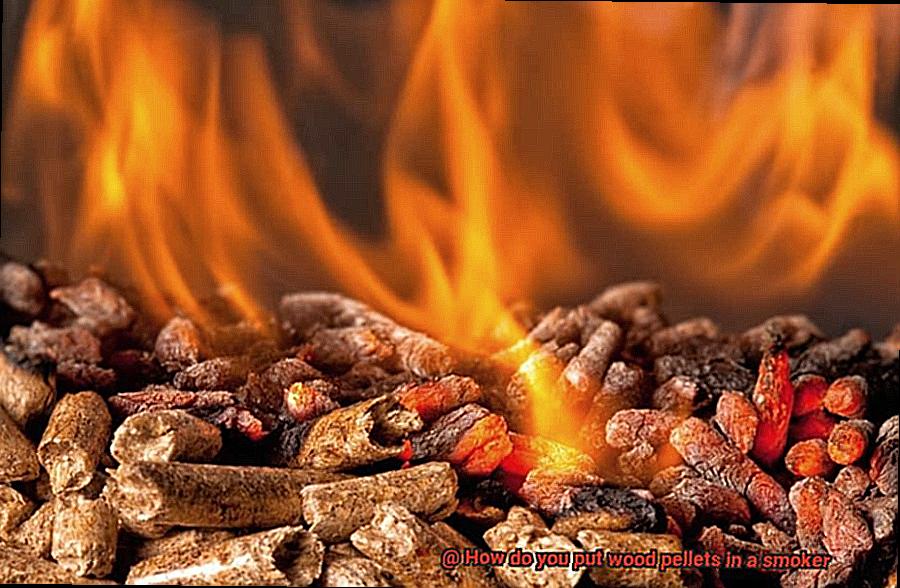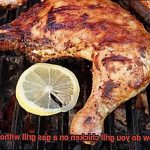Are you a barbecue enthusiast who craves the mouth-watering smoky flavors of perfectly grilled meat? Well, you’re in luck because we’ve got some pro tips to help you elevate your BBQ game. The secret to achieving that perfect flavor lies in choosing the right wood pellets for your smoker. Yes, it’s true – the right wood pellets can make all the difference.
But how do you put wood pellets in a smoker? It may seem like a straightforward task, but for beginners, it can be daunting. Don’t worry though, we’ve got your back.
In this blog post, we’ll walk you through everything you need to know about adding wood pellets to your smoker. We’ll cover essential points like which pellets to use, how much to add, when to add them, and how to ensure they burn efficiently.
Whether you’re a seasoned pitmaster or just starting on your BBQ journey, this post is for you. So buckle up and get ready to learn the best techniques for putting wood pellets in a smoker and taking your BBQ skills up a notch.
Contents
What is a Wood Pellet Smoker?
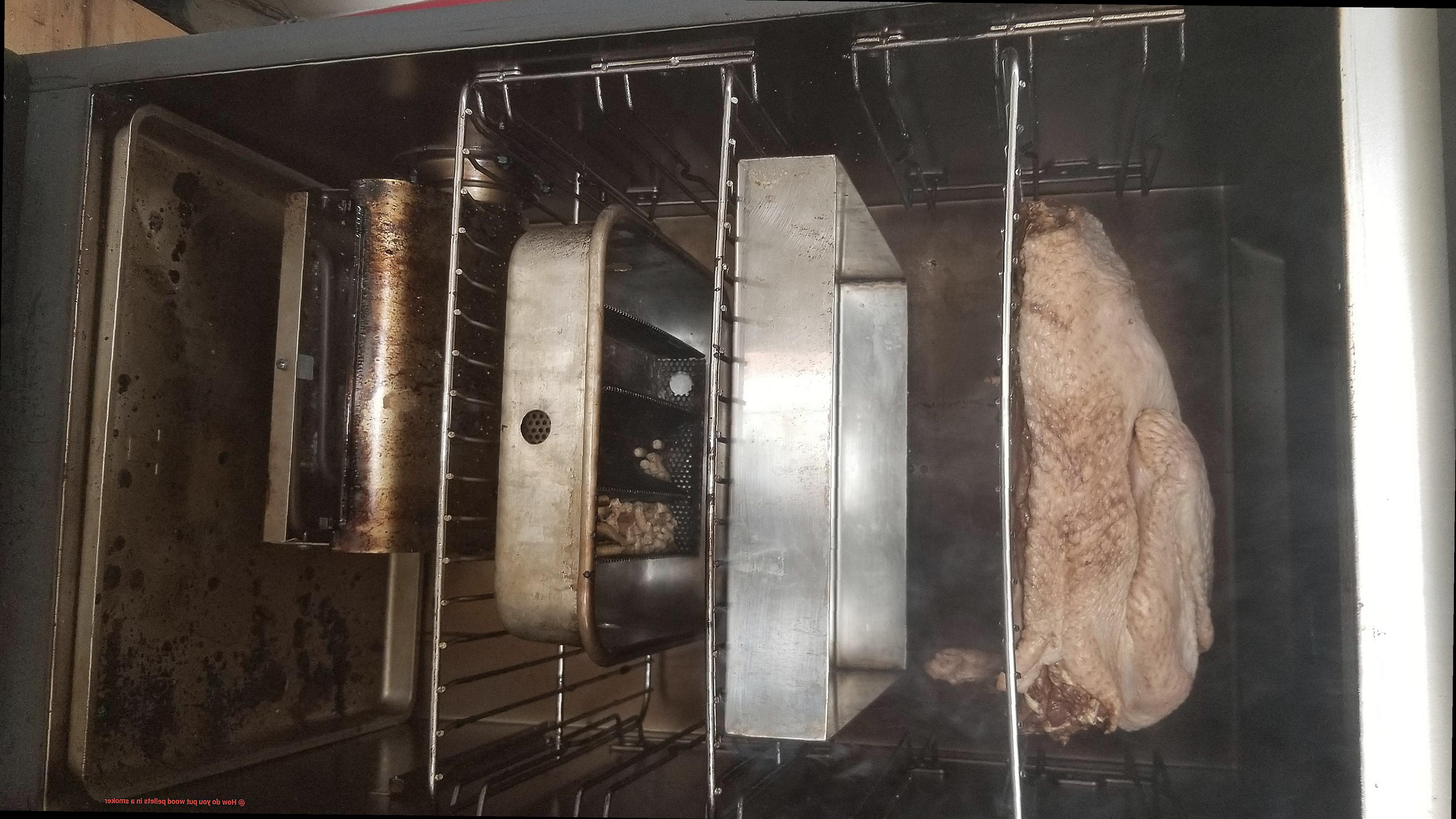
If you’re a fan of mouth-watering, smoky meat, you might have considered investing in a wood pellet smoker. But what exactly is a wood pellet smoker?
A wood pellet smoker is an outdoor cooking machine that uses wood pellets as fuel to smoke or grill food. Unlike traditional charcoal or gas grills, these smokers use electricity to power an auger that feeds the pellets into a firebox. The pellets are made from compressed sawdust and wood waste materials and come in various flavors such as hickory, mesquite, applewood, and cherrywood.
One of the main advantages of a wood pellet smoker is its versatility. You can use it not only for smoking but also for grilling, roasting, baking, and braising. Plus, they produce a consistent temperature and smoke output, making it easier to achieve the desired flavor and texture in your food. And because they use renewable wood pellets instead of non-renewable fossil fuels, they’re also more environmentally friendly than other types of grills.
When choosing a wood pellet smoker, consider factors such as size, cooking capacity, temperature range, hopper size, and price. Popular brands include Traeger, Pit Boss, Camp Chef, and Green Mountain Grills.
To use a wood pellet smoker, fill the hopper with your desired pellets, turn on the smoker, and set the temperature to your desired level. The pellets will feed into the firebox and ignite, creating smoke. Keep an eye on the pellet levels in the hopper to ensure you don’t run out of fuel midway through cooking.
Different types of wood pellets produce different flavors; hickory pellets offer a bold flavor while applewood pellets offer a sweeter and milder flavor. You can experiment with different types of pellets to find your preferred taste.
What Types of Wood Pellets are Available?
Smoking meat is an art form that requires attention to detail, and choosing the right wood pellets is a crucial part of the process. With so many different types of wood pellets available on the market, it can be challenging to decide which one to use for your next smoking session. Let’s explore some of the different types of wood pellets and their unique characteristics.
Hickory Wood Pellets
Hickory wood pellets are the most popular type of pellet used for smoking meat. They have a strong, smoky flavor that pairs well with pork and beef dishes. Hickory pellets also add a sweet and savory taste to the meat, making it a favorite among grill masters. The aroma from hickory pellets is robust, and it can be overpowering if used in excess.
Applewood Pellets
For those who prefer lighter flavors, applewood pellets are an excellent choice. These pellets have a sweet and fruity flavor that complements poultry and fish dishes well. Applewood pellets also add a pleasant aroma to the meat, making it an ideal choice for those who enjoy mild flavors. Unlike hickory pellets, applewood pellets have a subtle aroma that doesn’t overpower the meat.
Mesquite Wood Pellets
If you love bold and spicy flavors, mesquite wood pellets are an excellent choice. Mesquite pellets have an intense and smoky flavor that pairs well with beef and game meats. They also add a robust aroma to the meat, making it an ideal choice for those who enjoy strong flavors. However, mesquite pellets should be used in moderation as they can easily overpower the meat.
Alder Wood Pellets
Alder wood pellets have a subtle smoky flavor that is perfect for fish and seafood dishes. They add a delicate aroma to the meat, making it an excellent choice for those who prefer light flavors. Alder pellets are also versatile and work well with other mild-flavored meats like chicken or pork.
Other Types of Wood Pellets
There are many other types of wood pellets available, including cherry, pecan, maple, oak, and more. Each type of pellet offers unique flavors and aromas that can enhance your smoking experience. Cherry pellets have a slightly sweet flavor that works well with pork and poultry, while pecan pellets have a nutty taste that pairs well with beef. Maple pellets offer a sweet and subtle flavor that complements most meats, while oak pellets provide a robust and smoky flavor that is ideal for red meats.
How to Fill the Hopper with Wood Pellets
Smoking meat is an art, and filling the hopper with wood pellets is a crucial step in the process that should not be overlooked. By following the steps below, you can ensure that your smoker is filled with the right type of pellets and ready to produce delicious and flavorful smoked meats.
Step 1: Select the Right Wood Pellets
The first step in filling the hopper with wood pellets is to choose the right type of pellets. The choice of pellets you use can significantly impact the taste of your food. For example, oak pellets are perfect for red meats, while maple pellets lend a sweet flavor that’s great for pork or poultry. Be sure to research which type of pellet best suits your meat and flavor preferences.
Step 2: Clean Out the Hopper
Before adding new pellets to the hopper, it’s essential to clean out any debris or leftover pellets from previous use. This step ensures that there are no inconsistencies in heating or combustion and that your meat will cook evenly.
Step 3: Gradually Add New Pellets
When adding new pellets, it’s important to do so gradually to avoid overfilling the hopper and causing a pellet jam. Pour a small amount of pellets into the hopper and continue adding more until it is two-thirds full. This amount is enough to produce smoke for several hours before needing a refill.
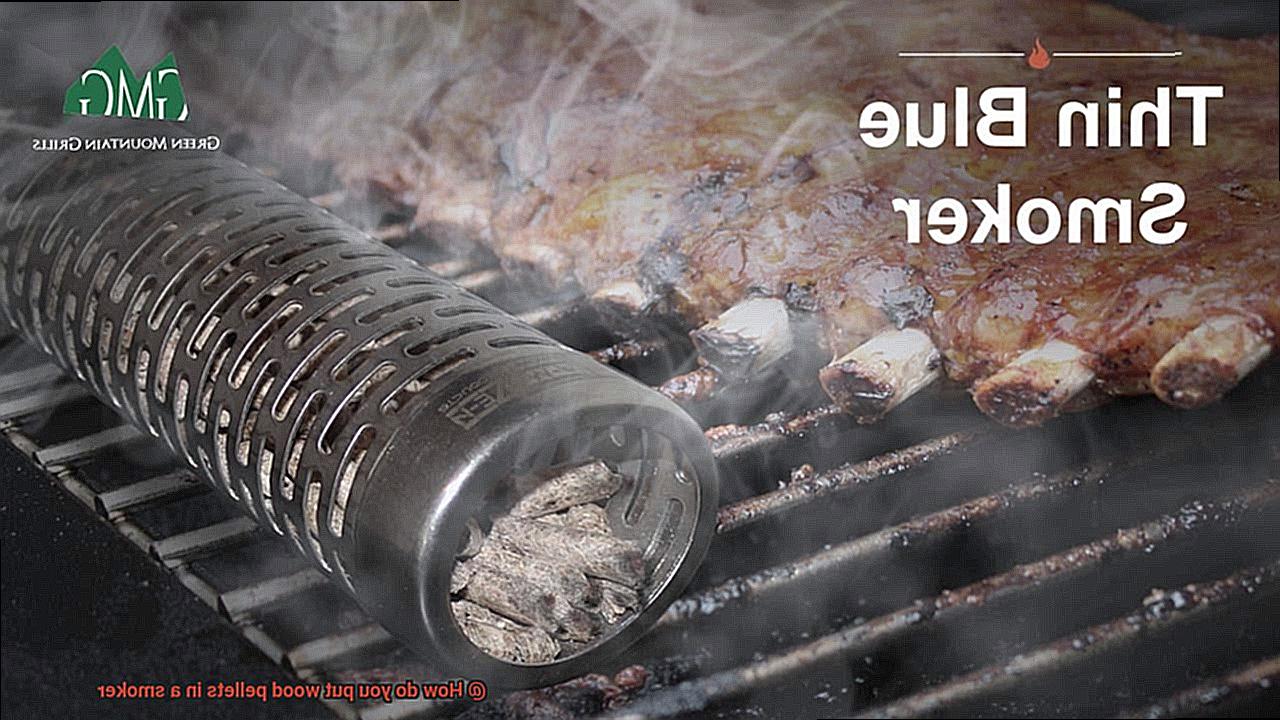
Step 4: Store Pellets Correctly
To prevent moisture from affecting the quality of your pellets, store them in a dry and cool place away from direct sunlight and moisture. Using a funnel when pouring pellets into the hopper can also help prevent spills and make the process more manageable.
Step 5: Monitor the Hopper
As you smoke your meat, keep an eye on the hopper to ensure that it doesn’t run out of pellets. When you notice that the pellet supply is getting low, add more to prevent any interruption in your cooking process.
Setting the Temperature of the Smoker
As an expert in smoking meat, I’ve compiled some essential tips and tricks to help you perfect the art of setting the temperature of your smoker.
First and foremost, it’s crucial to identify what type of smoker you’re using. Each type of smoker has its unique method of controlling temperature. For instance, electric smokers come with a digital control panel that lets you set your desired temperature. Meanwhile, charcoal smokers require manual adjustments to the airflow and fuel to achieve the desired temperature.
Once you have a grip on how to control the temperature of your smoker, it’s time to preheat it. Preheating can take anywhere from 15 minutes to an hour depending on the type of smoker and the outdoor temperature. To ensure that your smoker maintains the desired temperature throughout the cooking process, make sure there is enough fuel.
The type of wood pellets you use also plays a significant role in setting the temperature of your smoker. Hardwood pellets burn hotter and faster than softwood pellets, so take note of this when adjusting your temperature. Avoid using too many wood pellets at once, as this can cause a sudden increase in temperature.
As you commence cooking, it’s essential to monitor the temperature closely and make adjustments as needed. Remember that the temperature affects how quickly or slowly your meat cooks and how much smoke it absorbs. Check the thermometer every 30 minutes or so and adjust the airflow or fuel accordingly.
To sum up, here are some key takeaways when setting the temperature of your smoker:
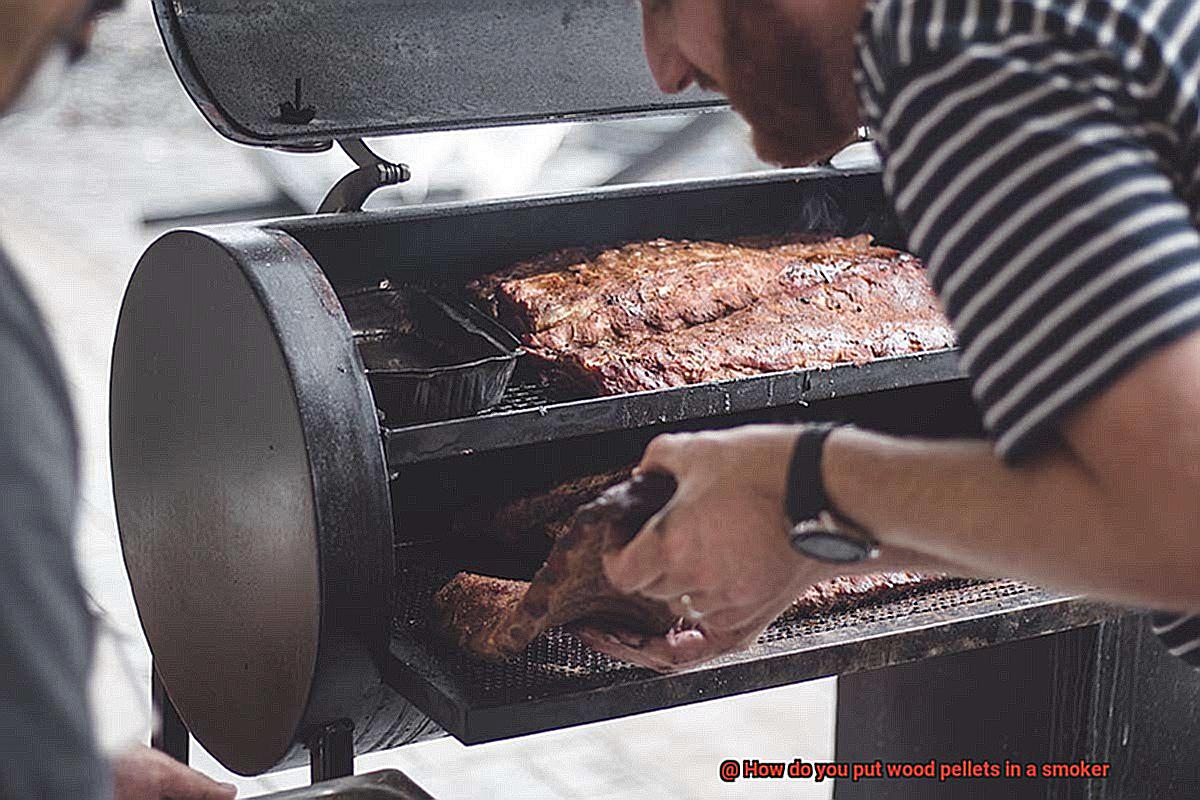
- Identify what type of smoker you’re using
- Preheat it for 15 minutes to an hour depending on the type of smoker and outdoor temperature
- Ensure there is enough fuel in your smoker
- Take note of the type of wood pellets you’re using
- Monitor the temperature closely and make adjustments as needed
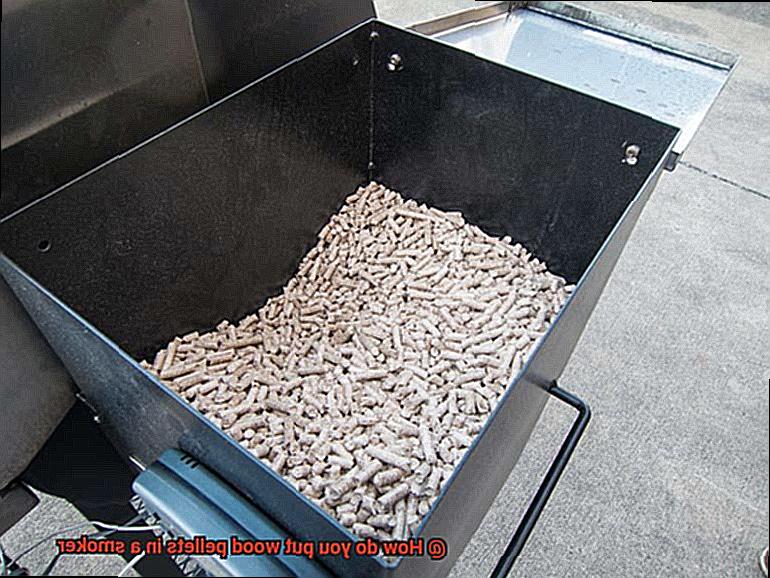
Different Flavors from Different Types of Wood Pellets
Different types of wood pellets can add unique and tantalizing flavors to your grilled food. From strong and bold to sweet and fruity, each type of wood pellet offers a distinct taste that can enhance the overall flavor of your dish. Here are five sub-sections that delve deeper into the different types of wood pellets and the flavors they provide.
Hickory Pellets
Hickory pellets are a popular choice among grillers who crave a strong and smoky flavor. These pellets are perfect for beef, pork, and poultry dishes, as they provide a bold taste that pairs well with hearty meats. The aroma of hickory pellets can infuse the meat with a rich and savory flavor that will leave your taste buds wanting more.
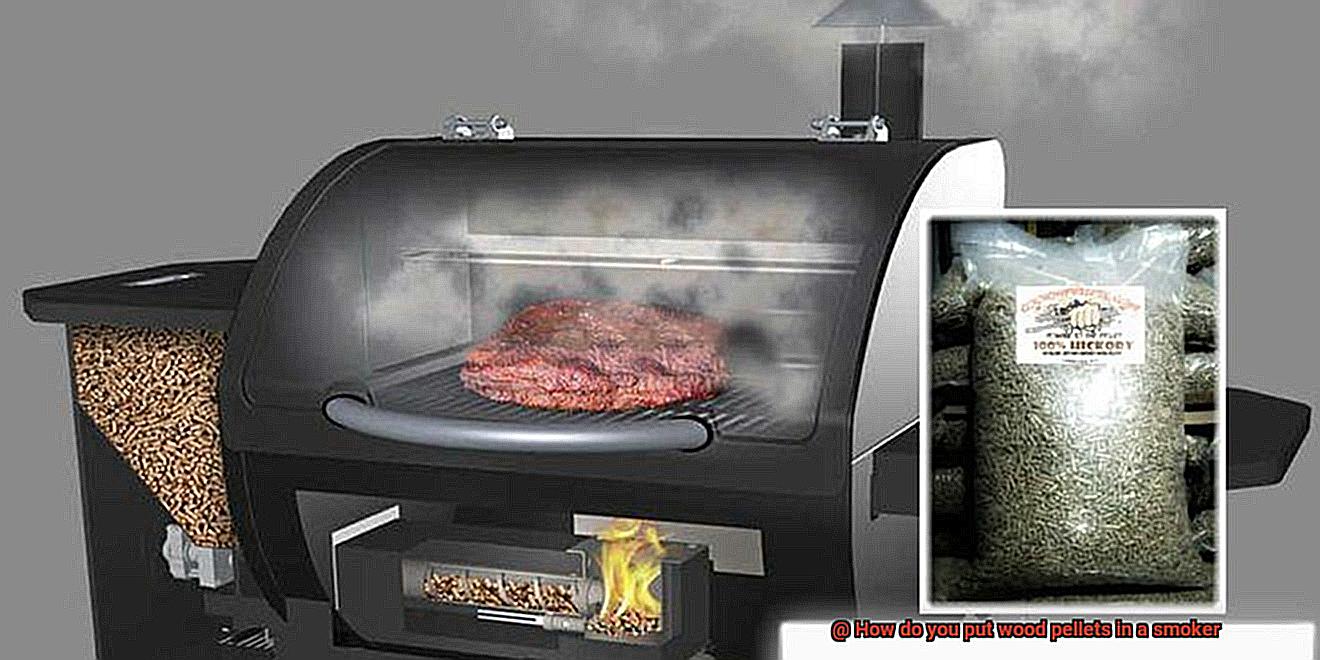
Apple Pellets
For those who prefer a sweeter taste in their grilled food, apple pellets are an excellent choice. These pellets provide a sweet and fruity flavor that complements pork and poultry dishes perfectly. The aroma of apple pellets can give your meat a mouth-watering scent that will make your guests salivate.
Oak Pellets
Oak pellets offer a medium smoky flavor that is versatile enough to pair with any type of meat. Whether you’re grilling beef, pork, or poultry, oak pellets can provide your dish with a subtle yet delicious taste that will satisfy your cravings. The aroma of oak pellets can give your meat a classic smoky flavor that will transport you to the heart of barbecue country.
Mesquite Pellets
Mesquite pellets offer a unique smoky flavor with a slightly sweeter taste than hickory pellets. These pellets are commonly used for grilling steaks and other red meats, as they provide a bold flavor that stands up well to hearty meats. The aroma of mesquite pellets can give your meat a mouth-watering scent that will have your guests asking for seconds.
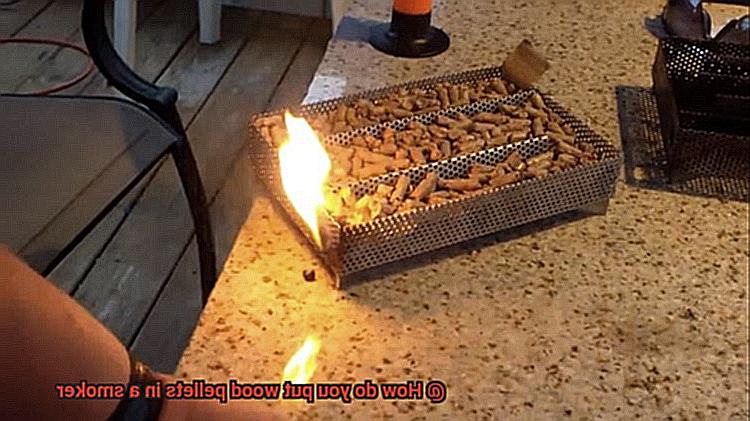
Cherry Pellets
Cherry pellets provide a mild sweetness that works well with poultry, pork, and even certain types of fish. These pellets offer a subtle flavor that can enhance the overall taste of your dish without overpowering it. The aroma of cherry pellets can give your meat a delicate yet delicious scent that will leave your guests impressed.
Monitoring the Levels of Pellets in the Hopper
Smoking meat is an art form, and like any artist, you need the right tools and techniques to create a masterpiece. That’s why it’s crucial to monitor the levels of pellets in the hopper when using a smoker. The hopper is where wood pellets are stored and fed into the smoker. Without enough pellets, your meat won’t cook to perfection, so let’s explore this topic in more detail.
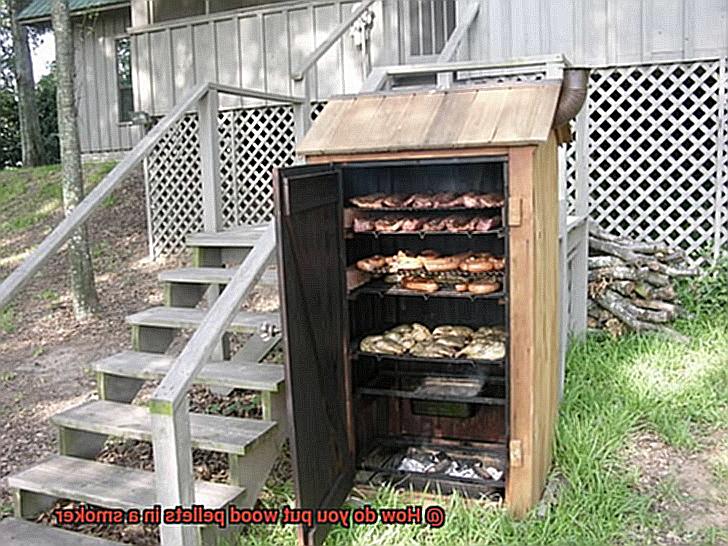
Firstly, fill your hopper with wood pellets. How much you need will depend on the size of your smoker and how long you plan to smoke your meat. To be safe, fill the hopper about three-quarters full. This will give you enough pellets to keep your smoker going for several hours.
Now comes the most important part: monitoring the levels of pellets throughout the cooking process. Check the hopper periodically to ensure there are enough pellets. Some smokers come with a pellet sensor that alerts you when the hopper is running low. If your smoker doesn’t have this feature, use a flashlight or another light source to check the level of pellets in the hopper.
Besides keeping an eye on levels, you must ensure that the pellets feed correctly into the smoker. Otherwise, it can cause temperature fluctuations and affect the cooking process. Check for blockages or clogs in the hopper or feeder tube and adjust the flow rate if needed.
Why is monitoring pellet levels so important? Here are three reasons:
- Consistent Temperature: Maintaining a consistent temperature is vital when smoking meat. Running out of pellets will cause your smoker to cool down, throwing off the cooking process.
- No Interruptions: Avoid interruptions by keeping an eye on pellet levels. There’s nothing worse than running out of pellets halfway through cooking.
- Better Flavor: The amount and type of pellets used can affect flavor. By monitoring pellet levels, you can adjust accordingly and get the flavor you want.
Tips for Smoking Meat with Wood Pellets
Smoking meat with wood pellets is a popular cooking method that can infuse your favorite meats with delicious, smoky flavors. However, to achieve the best results, it’s crucial to select the right type of wood pellets for your smoker. Here are five sub-sections that explain the importance of choosing the right wood pellets for smoking meat:
Understanding Different Types of Wood Pellets
Each type of wood pellet has its unique flavor profile, and it’s essential to understand the differences between them before choosing what to use. For example, hickory pellets have a strong, smoky flavor that pairs well with beef and pork, while fruitwood pellets like apple or cherry have a sweeter taste that complements poultry and fish.
Matching Wood Pellets with Meat
Matching the right type of wood pellets with the meat you’re smoking is another crucial factor to consider. The right pairing can enhance the flavor profile of the meat and create a harmonious taste experience. For instance, mesquite pellets go well with red meats like steak or brisket, while alderwood pairs perfectly with salmon.
Experimenting with Wood Pellet Blends
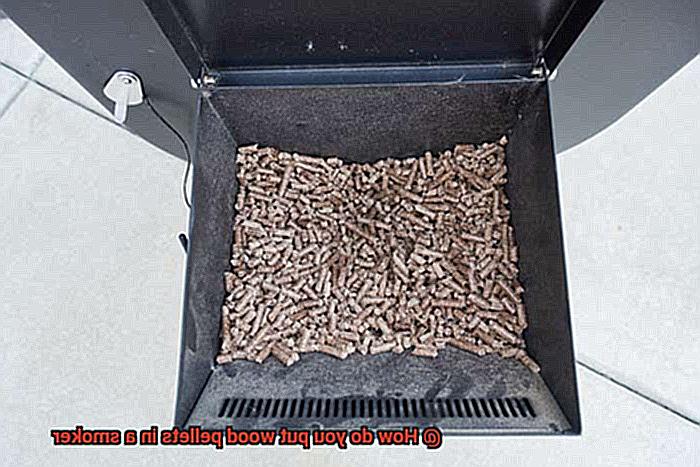
Don’t be afraid to experiment with different wood pellet blends to create unique flavor combinations. Mixing wood pellets can add depth and complexity to your smoked meats. For example, combining mesquite and oak creates a smoky, robust flavor that goes well with chicken or pork.
Checking for Freshness
Checking for freshness is key when choosing wood pellets for your smoker. Old or stale wood pellets can produce unpleasant flavors and affect the quality of your meats. Ensure your wood pellets are fresh and have been stored properly in a dry, cool place.
Avoiding Softwoods
Softwoods like pine or cedar should never be used for smoking meat because they contain high levels of resin that can leave an unpleasant taste on your food. Stick to hardwoods like oak, hickory, or fruitwood pellets to achieve the best results.
Ejc8YWIOEvQ” >
Conclusion
In summary, the art of smoking meat with wood pellets is all about attention to detail and mastering the right techniques. The type of wood pellet you choose can make or break the flavor and aroma of your meats. If you’re a fan of bold and smoky flavors, hickory pellets are perfect for you. Alternatively, applewood pellets offer a sweeter taste that beautifully complements poultry and fish dishes.
When adding new pellets to your smoker’s hopper, it’s essential to clean out any debris or old pellets from previous use. Gradually adding new pellets will prevent overfilling the hopper, while proper storage in a dry and cool place away from sunlight and moisture will ensure their quality.
Keeping an eye on the pellet levels in the hopper is crucial for maintaining consistent cooking temperatures. Checking for blockages or clogs in the hopper or feeder tube guarantees that the pellets feed correctly into your smoker.
Finally, don’t be afraid to experiment with different wood pellet blends to create unique flavor combinations. Mixing various types of wood pellets can add depth and complexity to your smoked meats, leaving your guests’ mouths watering with every bite.

